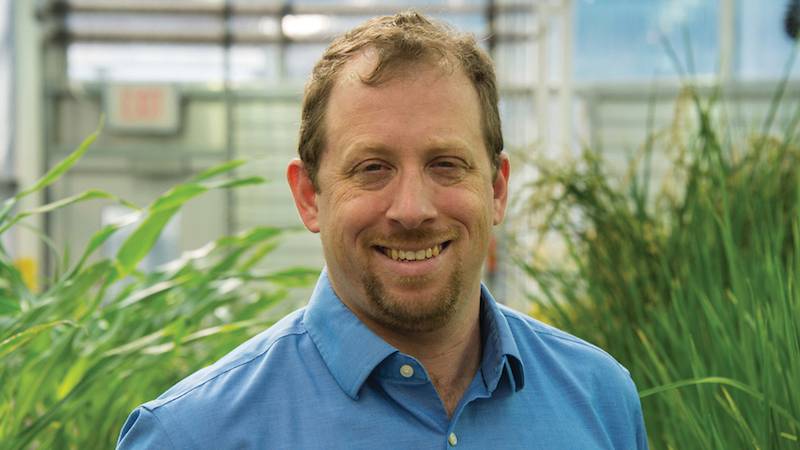Danforth Plant Science Center to Lead Multi-Institutional Research Project to Improve Bioenergy Crop’s Water Use

Ivan Baxter, Donald Danforth Plant Science Center
Principal Investigator Ivan Baxter, PhD, member, Donald Danforth Plant Science Center, will lead a five-year, $16 million multi-institutional project to deepen the understanding of water use efficiency (WUE) in sorghum, a versatile bioenergy crop. The project, funded by the U.S. Department of Energy Biosystems Design to Enable Safe Production of Next-Generation Biofuels, Bioproducts and Biomaterials program, will focus on an integrated engineering approach that leverages plant physiology, genetics, genomics, genome engineering, synthetic biology and modeling.
Water is a major limitation for crop production. The movement of water from the soil through the stems and leaves and out into the air moves nutrients up the plant. Crop irrigation consumes 80% of global freshwater use. “To be economically viable and have environmental benefits, crops used for bioenergy production need to be grown where the supply of water is insufficient or too inconsistent to support the production of traditional food crops,” said Baxter.
Yields of bioenergy crops, such as Sorghum bicolor, have increased through breeding and improved agronomy. However, the amount of biomass produced for a given amount of water use has remained constant.
Joining Baxter as collaborators on this project are Jennifer Brophy and José Dinneny, PhD, Stanford University; Asaph Cousins, PhD, Washington State University; Andrew Leakey, PhD, University of Illinois, Champaign-Urbana; Albert Kausch, PhD, University of Rhode Island; Todd Mockler, PhD, Danforth Center; Sue Rhee, PhD, Carnegie Institution for Science; and Dan Voytas, PhD, University of Minnesota. The team will focus on three major control points of water-limited production: enhanced acquisition of available water by roots, reduced water use through the pores plants use to exchange water and CO2, and improving photosynthetic carbon assimilation. Work within the consortium aims to identify the major bottlenecks that affect each of these processes and address them through engineering approaches.
The team will work in parallel with sorghum and a closely related model plant, Setaria viridis, which is smaller and faster growing to enable rapid testing. In both species, genetics, genomics, and bioinformatics will be used to identify new genes that can affect the control points. Synthetic biology approaches will be developed to control when and where in the plant the genes are expressed, and modeling will be used to determine the best approaches. New plant transformation approaches will be used to accelerate evaluation cycles, moving quickly from idea to implementation. “Combining ‘design-build-test-learn’ cycles with parallel studies of model and crop species will enable rapid experimental iterations, leading to faster and substantial water use efficiency improvements in bioenergy feedstocks,” Baxter said.






